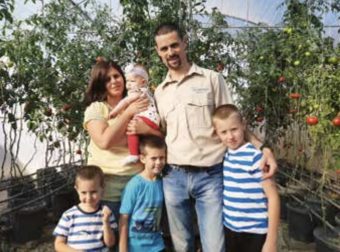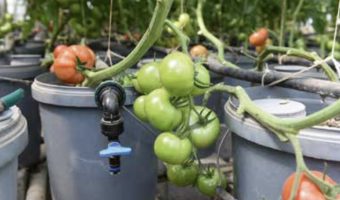
Not far from Sombor, the idyllic town of Vojvodina is the village of Stapar, where, on a plot of only six acres, Srđan and Vesna created a wonderful family of six with their love but also the hope that sustainable agricultural entrepreneurship can take root in Serbia. We spoke with Srđan Radin about their story, which was made official in 2015 with establishment of the “Vesna Radin” agricultural farm.
Wishing to produce healthy and tasty fruits and vegetables with long-lasting freshness and researching how to achieve this, they concluded that it is necessary to turn to more modern ecological production. It led them to aquaponics in 2014.
If the meaning of the term itself is not familiar to you, Srđan Radin readily gives a striking definition.
IN FOCUS:
- QUICK AND EASY WAY TO THE NEAREST CHARGER IN THE CHARGE&GO NETWORK
- PILLARS OF SUPPORT FOR COMPANIES IN TIMES OF ENERGY CRISIS
- ENERGY EFFICIENCY IS THE BEST WAY TO SAVE ENERGY
Aquaponics is a quiet ecological revolution in producing healthy and fresh food. “Cultivating agricultural land emits large amounts of carbon dioxide, while the aquaponic system allows plants to be grown without using the land. Aquaponics does not require a large area for cultivation or land and offers the possibility of growing plants in urban areas, on the roofs of buildings, and even in restaurants within small, strictly controlled spaces. In this way, the need for longer transport routes is reduced, which also reduces harmful emissions from this source,” explains Srđan.

In this system, plants grow six times faster in small cultivation areas, and water consumption is 90 per cent less than in traditional agriculture. It is possible thanks to the system in which plants and fish are grown simultaneously.
“Water is pumped from the fish tank to the plant growing tank. In a circular cycle, water trickles over gravel, perlite, or hydroton balls, then passes past plant roots and drains back into the fish tank. The joint cooperation of fish and plants makes this system unique. Faster plant growth is possible due to the naturally established fertilizer in the water. Fish have the role of the fastest plant protein converter, which allows plants to extract nutrients from the water and at the same time to purify the water for the fish,” Srđan explains the whole process and adds that this fertilizer is made from cold-blooded fish that does not carry Escherichia coli or salmonella, unlike fertilizers originated from warm-blooded animals. In addition, thanks to the circulation of water that does not require changing, this resource is significantly saved.
With this method of agriculture, 50 kilograms of fish and hundreds of kilograms of vegetables can be produced in six months in a space whose dimensions are only eight by four meters.
Prepared by: Katarina Vuinac
Read the story in the new issue of the Energy portal Magazine ENERGETIC EFFICIENCY



